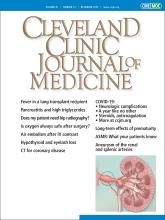
“Dawn is breaking everywhere, light a candle, curse the glare. Draw the curtains, I don’t care, ’cause it’s all right. I will get by… I will survive.”
—Jerry Garcia and Robert Hunter. Touch of Grey. 1987.
History may repeat itself, but each year also brings something new, and this year it seems that we have rewritten the book. Historically, there likely have been times when a confluence of obstacles was equally daunting. But never has this happened in an environment when so much unfiltered information is available, while at the same time people are questioning the honesty of the organs responsible for the information transfer. Understandably, the various media outlets have defensively and aggressively responded to these challenges, but in doing so have morphed their perspective away from true objectivism and have added to the polarized environment in a way that has actually magnified the skepticism about what is factual and what is almost factual. Reflecting my age and the idealized and somewhat naive American world I grew up in, I ask, “Where is Walter Cronkite when we need him?”
Veracity and bias are issues that our editorial staff and I, as editor in chief of a medical journal, address on a daily basis. We live with and accept the concept that scientific “truths” are ephemeral, open for nuanced interpretation and situational exceptions. Clinical studies are always an approximation of reality; the hope is that the approximation is a good one. A policy of fact-checking is intrinsic to responsible medical publication. We call it peer review.
I want to offer my thanks to all our peer reviewers of the past year. We try to obtain 3 substantive peer reviews for each submitted manuscript. I ask our reviewers to focus on accuracy, to point out any nuances not indicated to be the authors’ opinion that could be construed as unstated bias, and to offer suggestions as to how to improve the teaching value of each paper to our readership of practicing clinicians. This is no trivial request to our reviewers, all of whom are likely already overcommitted with their other responsibilities. Frequently, I also call upon our deputy editors Pelin Batur and Craig Nielsen to adjudicate mixed reviewer comments, to balance out or confirm concerns that I have, and particularly to provide insights for enhancing the practical clinical relevance of accepted manuscripts. Regarding our new online “COVID-19 Curbside Consults” section, this highly read addition to the Journal would not have been remotely possible without tireless input and review work from Kristin Highland, Mary Cusick, and many others. Thank you.
We are not immune to pointed questions about our process. I was recently challenged aggressively by an investigative reporter as to whether the reason that we published a paper discussing the potential role of anticytokine therapy in treating patients with COVID-19 was that I had previously received an honorarium for lecturing about the use of one of those drugs (for FDA-approved indications for other diseases). Naively, I initially didn’t even realize the implication of this question—who in the medical community in the early throes of the pandemic was not interested in expert opinion regarding anticytokine therapy to address the cytokine storm associated with coronavirus infection? But his question did prompt me to reconsider the possibility of intrinsic bias in editorial decision-making. While indeed the final decision to accept or reject a paper is mine, I very rarely make this decision in a vacuum without significant input from others. A preplanned updated version of that specific paper emphasized the failure of the mentioned therapy to significantly reverse the clinical course of treated patients. As above, apparent truth is ephemeral. We enhanced the visibility of author disclosures of potential or perceived conflicts of interest in our online postings to parallel our current practices in the printed version of the Journal.
As a country, we survived the overlapping impact of World War I and the H1N1 “Spanish Flu” epidemic, the latter of which strained the American health system and killed about 675,000 Americans. And we survived it despite President Woodrow Wilson’s lack of visible leadership, as he was incapacitated by a major stroke in 1919.
The year 2020 is about over. It has been a year like no other in our memory. There have been demons and heroes. I feel proud to be part of our medical community. Despite fear and impediments, we have stood strong in the face of many adversities. I do not think that we have lost our way. Particularly, let me give an unrestrained shout-out to my colleagues staffing intensive care units, emergency rooms, and COVID wards. Despite flabbergasting public accusations from national leaders that you are fraudulently diagnosing COVID-19 for financial gain, and despite the irrational resistance by political “leaders” to mandated mask-wearing to help protect the entire population and ultimately healthcare providers, your efforts remain exemplary. You are the women and men of the year.
My personal wishes for a more civil, peaceful, and healthier 2021, for all of us.
- Copyright © 2020 The Cleveland Clinic Foundation. All Rights Reserved.






